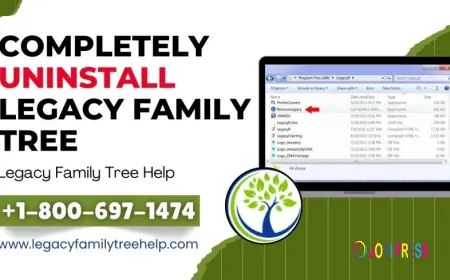How Does a Section 125 Plan Work and What Requirements Must Employers Follow?
Learn the key Section 125 cafeteria plan requirements, from written documents to nondiscrimination testing, and discover how employers can stay compliant.

Hand benefits are no longer seen as an voluntary add- on in moment’s plant; they're essential for erecting fidelity, retention, and satisfaction among staff. Among the range of benefit structures available, the Section 125 Cafeteria Plan is one of the most effective ways to offer inflexibility while also delivering significant duty advantages. Both workers and employers stand to gain, but these advantages only live when associations precisely follow the rules laid out under the Internal Revenue Code. Understanding the conditions of Section 125 is thus the first step toward creating a biddable and successful plan.
A Section 125 Plan Explained in Terms of How It Functions and Why It Exists
At its core, a Section 125 cafeteria plan requirements, also known as a cafeteria plan, gives workers the capability to choose between entering regular taxable compensation or opting certain good benefits on apre-tax base. This election to admit benefits rather of stipend reduces an hand’s taxable income and lowers their civil income duty, Social Security, and Medicare scores. Employers profit too because payroll levies are calculated on a lower base.
The “ cafeteria ” term reflects the menu- suchlike approach of these plans, where workers can elect the benefits that fit their requirements. Typical options include employer- patronized health insurance decorations, dental and vision content, benefactions to health flexible spending accounts, dependent care backing programs, and group- term life insurance within permissible limits. The inflexibility is significant, but it's important to understand that not all benefits qualify for addition under Section 125 rules, and miscalculations in this area can peril the duty- advantaged status of the entire plan.
Why Every Section 125 Cafeteria Plan Must Begin with a Written Plan Document
The IRS requires that every cafeteria plan be formally established through a written document that outlines the details of how the plan operates. This written plan is n't voluntary; without it, the arrangement can not be honored as a valid Section 125 plan, and the duty benefits are disallowed.
The plan document must describe the types of benefits available, the eligibility conditions for workers, the rules for making choices, and the timing of those choices. It must also give procedures for handling changes in choices due to qualifying life events. Beyond these conditions, the document should make clear how the plan ensures compliance with nondiscrimination rules. In short, the written plan is the backbone of the entire cafeteria plan arrangement.
How Hand Eligibility and Nondiscrimination Rules cover Fairness in Participation
Another crucial demand of Section 125 cafeteria plans is that they must be offered fairly to workers without differencing in favor of largely compensated individualities, officers, or shareholders. To meet this standard, all eligible workers must have a meaningful occasion to share.
Nondiscrimination rules are executed through periodic testing.However, also those individualities may lose the capability to admit their benefits on apre-tax base, If the plan is set up to disproportionately profit advanced- paid workers. This does n't inescapably abate the plan for all workers, but it does produce fiscal consequences and implicit hand dissatisfaction. Employers must thus design their plans with fairness in mind from the onset.
Understanding the Types of Benefits That Can and Can not Be Offered Under Section 125
Employers can not offer any benefit they wish under a Section 125 plan. The law easily limits what can be included. Qualifying benefits generally include group health insurance decorations, dental and vision insurance, flexible spending accounts for health- related charges, dependent care backing programs, and limited quantities of group- term life insurance.
By discrepancy, particulars similar as commuter benefits, education backing, refections, or spa enrollments do n't qualify. Includingnon-permissible benefits is one of the most common miscalculations employers make, and it can place the duty- advantaged nature of the plan at threat. For this reason, careful planning and review of benefit options is essential before rolling out a cafeteria plan.
The Rules Governing choices and the Special Exceptions for Life Events
Once workers make their benefit choices at the morning of the plan time, those choices are binding for the remainder of the time. The IRS allows changes only in veritably specific circumstances, similar as marriage, divorce, birth or relinquishment of a child, or loss of other content. This rule prevents workers from changing their choices opportunistically, which would undermine the duty savings structure of the plan.
Employers must easily communicate these rules to workers and have systems in place to corroborate and validate qualifying life events when they do. Proper running of choices is essential to keeping the plan biddable and avoiding crimes that could lead to penalties or the loss of duty benefits.
Why Nondiscrimination Testing and Compliance Reviews Are Essential Every Time
A Section 125 cafeteria plan is n't commodity that can be set up formerly and also left alone. Each time, the IRS requires nondiscrimination testing to confirm that the plan does n't unfairly favor largely compensated individualities. These tests cover eligibility, benefactions, and benefits.However, advanced- paid workers may lose their duty advantages, which can produce resentment and compliance pitfalls for the employer, If the plan fails.
Beyond testing, employers should regularly review their written plan document to insure that it remains up to date with any changes in regulations or company programs. A failure to maintain compliance could undo the fiscal benefits that make cafeteria plans so seductive in the first place.
The Benefits Employers and workers Gain from a duly Managed Section 125 Plan
When designed and managed rightly, a Section 125 plan provides substantial fiscal benefits for both workers and employers. workers enjoy the immediate advantage of reduced taxable income, which means advanced take- home pay and lesser capability to cover healthcare and dependent care costs. Employers profit from reduced payroll duty liability, savings that can be considerable in associations with larger workforces.
The advantages are n't purely fiscal. Offering a cafeteria plan signals to workers that their employer values inflexibility and understands the different requirements of a ultramodern pool. This can ameliorate morale, aid in reclamation, and boost long- term retention.
Conclusion Why Expert Guidance Is Critical for Creating a Successful Section 125 Cafeteria Plan
A Section 125 cafeteria plan is one of the most important tools available to employers who want to offer meaningful, flexible, and duty-effective benefits. Yet the duty advantages depend on strict compliance with IRS conditions, including the creation of a written plan document, the enforcement of election rules, and the completion of periodic nondiscrimination testing. For businesses, the challenge is n't just designing a plan but also maintaining it time after time without slipping into expensive compliance miscalculations.
Associations that want to apply a cafeteria plan successfully can profit from the moxie of counsels who specialize in hand benefits and duty compliance. By partnering with knowledgeable professionals similar as those at BrightPath Advantage and BrightPath Group, employers can insure their Section 125 plan remains completely biddable, financially salutary, and strategically aligned with the requirements of both the business and its workers.
What's Your Reaction?
 Like
0
Like
0
 Dislike
0
Dislike
0
 Love
0
Love
0
 Funny
0
Funny
0
 Angry
0
Angry
0
 Sad
0
Sad
0
 Wow
0
Wow
0


















































